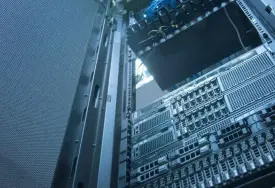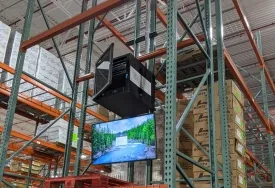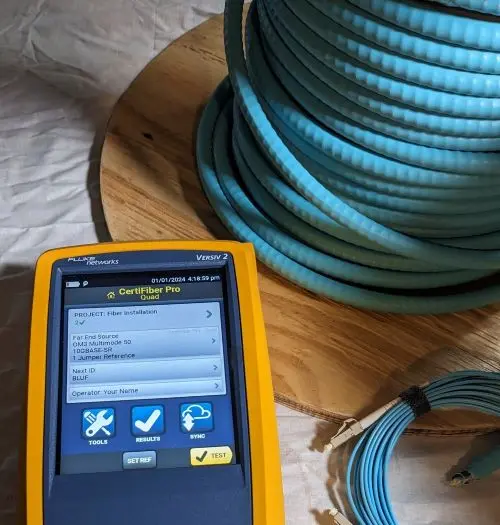Michigan, USA
DAS cabling monitoring

Distributed Antenna System (DAS) cabling monitoring is an essential component in ensuring the seamless operation and functionality of DAS networks, which are crucial for enhancing wireless communication in large buildings and complex environments. DAS cabling monitoring involves the continuous observation and management of the cabling infrastructure that connects antennas to the main network hub or base station, ensuring that signal integrity and network performance are maintained at optimal levels. This is particularly important in facilities such as stadiums, hospitals, airports, and shopping malls, where high user density can lead to significant demand on network resources. By implementing effective DAS cabling monitoring, network administrators can quickly identify and rectify any issues related to signal degradation, interference, or physical damage, thereby minimizing downtime and maintaining a high-quality user experience.
Incorporating DAS cabling monitoring into an organization's network management strategy offers numerous advantages. Primarily, it allows for proactive maintenance, as potential problems can be identified and addressed before they escalate into major outages. This is achieved through the use of advanced monitoring tools and software that provide real-time data and analytics on the performance of the cabling infrastructure. Additionally, DAS cabling monitoring helps in optimizing the overall network by ensuring that each antenna is functioning correctly, thereby improving coverage and capacity. This is especially critical in environments where reliable communication is non-negotiable, such as emergency services and mission-critical operations. Furthermore, the data collected through monitoring can be used to inform future network upgrades and expansions, ensuring that the infrastructure evolves in line with increasing user demands and technological advancements.
From a cost perspective, DAS cabling monitoring is a wise investment for any organization reliant on robust wireless communication systems. By preventing potential failures and identifying inefficiencies in the network, businesses can save on the hefty costs associated with emergency repairs and lost productivity. Moreover, the ability to monitor cabling remotely reduces the need for frequent physical inspections, thereby lowering operational costs and minimizing disruption to the daily activities within the facility. The integration of DAS cabling monitoring into a comprehensive network management plan not only ensures uninterrupted service but also supports strategic decision-making by providing valuable insights into network usage and performance trends. As the demand for high-speed, reliable wireless communication continues to grow, DAS cabling monitoring stands out as a critical tool in maintaining the efficiency and reliability of modern communication networks.
We bring a high level of expertise to every project, backed by years of industry experience. Please visit our work to see detailed examples of our completed projects and the high-quality standards we uphold.

Our team stays up-to-date with the latest network standards and installation practices, ensuring that your systems are cutting-edge and compliant. This means we use the most current technologies and methods to deliver reliable, efficient, and future-proof networking solutions.

We use only the highest quality copper, fiber, and AV products, ensuring superior performance and durability in all our installations. Each product is certified to meet or exceed manufacturers' specifications, guaranteeing optimal reliability and efficiency for your network.

Our data cabling projects are performed professionally, reliably, and with full accountability, giving you peace of mind and confidence in our services.
Upgraded a global financial services company’s WAN to an AT&T rate adjustable 100Mbps interstate-rated switched Ethernet circuit. Install flexible conduit from the parking garage telco room to the building interior. Pull 300’ CAT 5E CMP cable from AT&T demarc using the building’s existing conduit over the lobby and up to the tenant’s 3rd floor MDF...
Complete build-out of the cable plant for a national fine dining restaurant. Install flame-retardant telecom backboards in the electrical room. Install an 11U wall-mount open swing rack on the backboard. Ground rack to building UFER with #6 AWG. Core drill into the masonry block wall and install 1-¼ EMT sleeves. Build overhead cable support system in kitchen and dining...
Achieve higher bandwidth and faster data transfer rates for an investment bank branch’s Main Distribution Frame (MDF) to Immediate Distribution Frame (IDF) backbone. Pull (1) 6-strand armored fiber, 50 MIC MM OM4 cable and (4) CAT 6 CMP cables from 1st floor MDF to 1st floor IDF using existing cable pathways. Ground armored fiber to building UFER. Terminate, certify, and label all...
Complete network build-out of the appliances & kitchen cabinets department for a national home improvement retailer. Label existing data and voice cabling that connects to existing store terminals, printers, and phones. Reroute existing cabling to a temporary location. Move store terminals, printers, and phones to...

Michigan, a dynamic and diverse state located in the Great Lakes region of the United States, is renowned for its striking natural beauty, vibrant culture, and robust economy. With a population of approximately 10 million residents, Michigan is the 10th most populous state in the nation, offering a blend of urban excitement and rural tranquility.
One of Michigan's most distinctive features is its unique geography, being the only state split into two large peninsulas – the Upper and Lower Peninsulas, separated by the majestic Straits of Mackinac. This geographical division contributes to Michigan's extensive 3,288 miles of freshwater coastline, the longest of any political subdivision in the world, making it a haven for water enthusiasts and nature lovers. The state's abundant natural resources, including its vast forests and numerous inland lakes, support a thriving outdoor recreational industry.
Michigan's cultural landscape is equally compelling, with a rich history deeply rooted in Native American heritage, European settlement, and the automotive revolution. The city of Detroit, known as the birthplace of the American auto industry, is home to the "Big Three" automakers: General Motors, Ford, and Stellantis North America. This legacy has earned Michigan the nickname "The Automotive State," which continues to be an economic powerhouse and innovation hub with a growing focus on advanced manufacturing and technology.
Detroit also boasts a vibrant arts scene, famous for its contributions to music, particularly Motown and techno. Visitors can explore landmarks such as the Detroit Institute of Arts, which houses one of the most significant art collections in the country, and the Motown Museum, offering a nostalgic journey through the storied history of Hitsville U.S.A.
Ann Arbor, another key city, is home to the University of Michigan, a prestigious institution recognized for its research contributions and academic excellence. The city thrives on a blend of youthful energy and cultural diversity, offering numerous festivals, theaters, and galleries that enrich the community.
Michigan's economy is bolstered by a diverse range of industries beyond automotive, including agriculture, manufacturing, information technology, and tourism. The state's fertile farmland produces an array of crops, with Michigan being a top producer of cherries, blueberries, and apples. Additionally, the burgeoning craft beer industry and a growing number of wineries highlight Michigan's emerging role in artisanal food and beverage production.
For residents, Michigan offers a high quality of life, with affordable housing, excellent educational institutions, and a strong sense of community. The state is also appealing to businesses, thanks to its strategic location, skilled workforce, and supportive business environment.